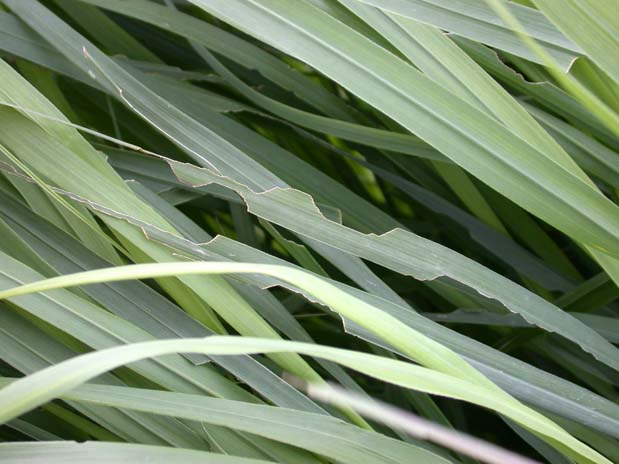

|
|
Armyworm damage
(John Obermeyer, Purdue University) |
|
Common Name: Armyworm - damage
See also: adult | larva Scientific Name: Noctuidae: Pseudaletia unipuncta Status: pest of grasses, small grain crops, and corn Damaging Stage: caterpillar Injury: Armyworms can be serious pests on a number of grasses, small grain crops, and corn. However, they also feed on and sometimes damage alfalfa, beans, clover, flax, millet, and sugar beets. Young caterpillars skeletonize leaf blades, while older caterpillars can consume the entire leaf. Action Threshold: If crops are showing signs of armyworm damage, it is usually too late to control the caterpillars. It is important to catch this pest when the caterpillars are still small and not feeding extensively. Field scouting for armyworms includes examining leaves and the base of plants for evidence of leaf feeding. When 25 percent of plants are being attacked, control methods should be considered. Management: Diseases, insect predators, and birds can often keep armyworm populations under control. In the case of a serious outbreak, chemical controls are extremely effective. |